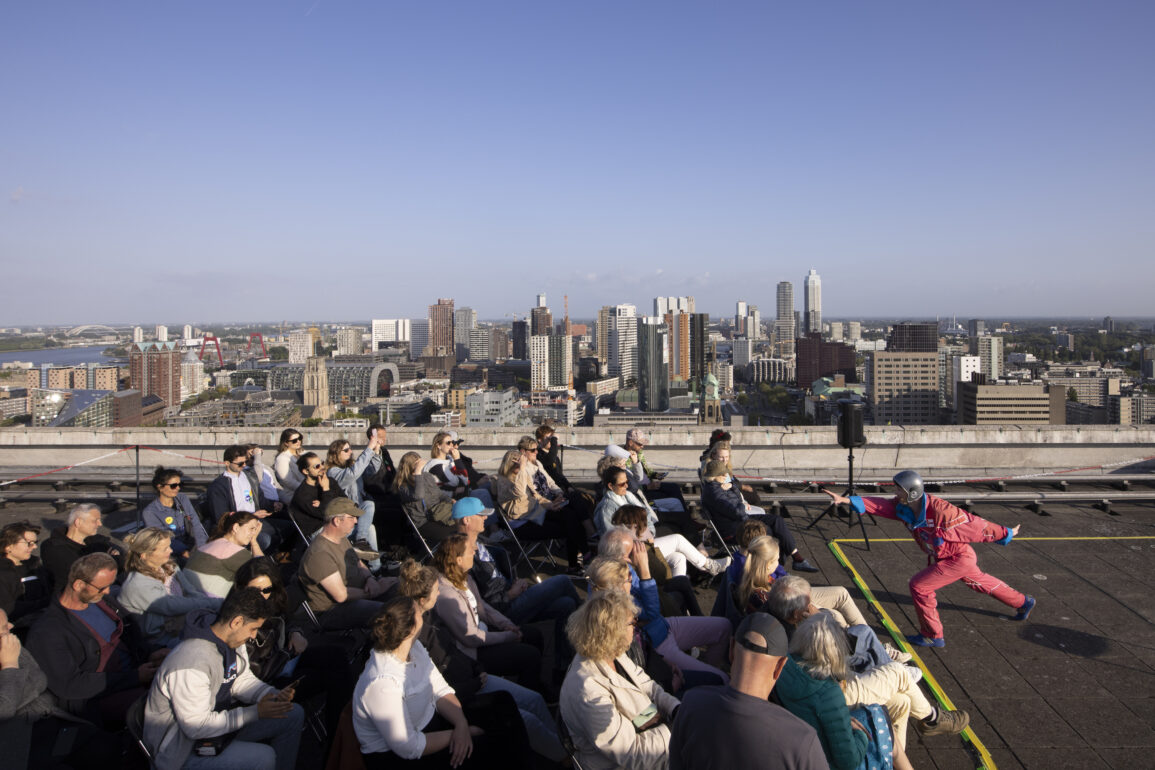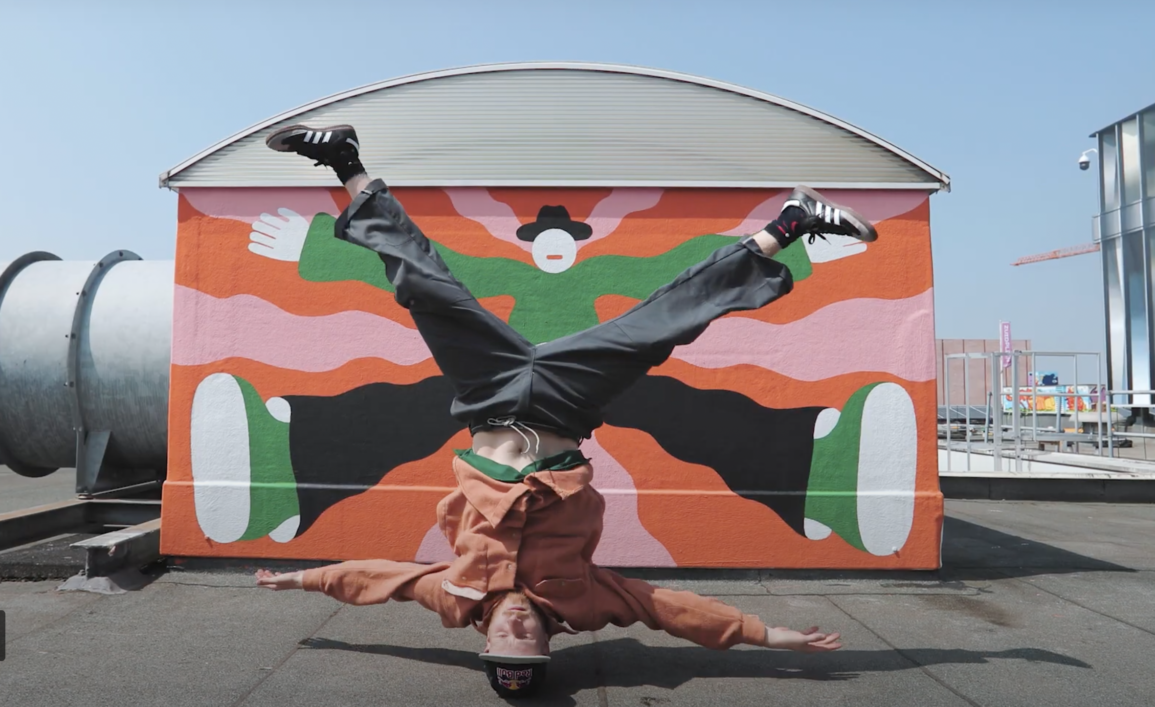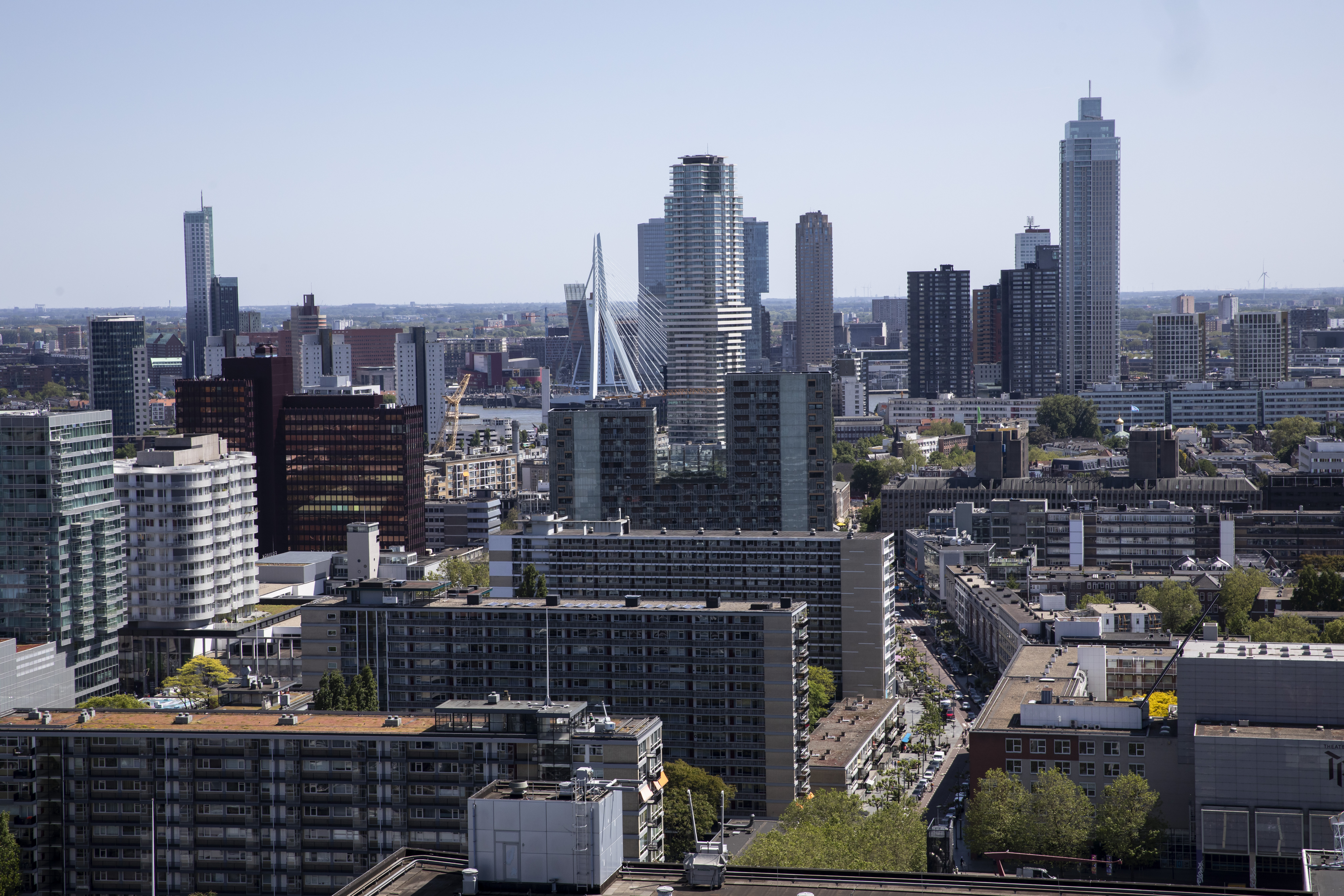
In our rooftop vision we answer three deceptively simple questions about Rotterdam Rooftop Days: Why Rotterdam? Why Rooftops? Why Days?
Rotterdam is unique in the Netherlands and Europe when it comes to its recent approach of architecture and the resulting buildings. The reconstruction after the WW2 bombing transformed the city into an engineerable, 20th-century project, something of an urban clean slate. The city’s story had to be rewritten and many had their pens at the ready. It is the 21st century however, where the plot of this story gets more complicated once again, and also more familiar.
The city centre no longer feels empty. The famous, proverbial cannon that you could fire after 6 pm without anyone noticing has disappeared from small talk on the street. It has been traded in for an impressive skyline and lively neighbourhoods. But also for the distressing effects of gentrification as city policy and an ever growing divide between high and low incomes.
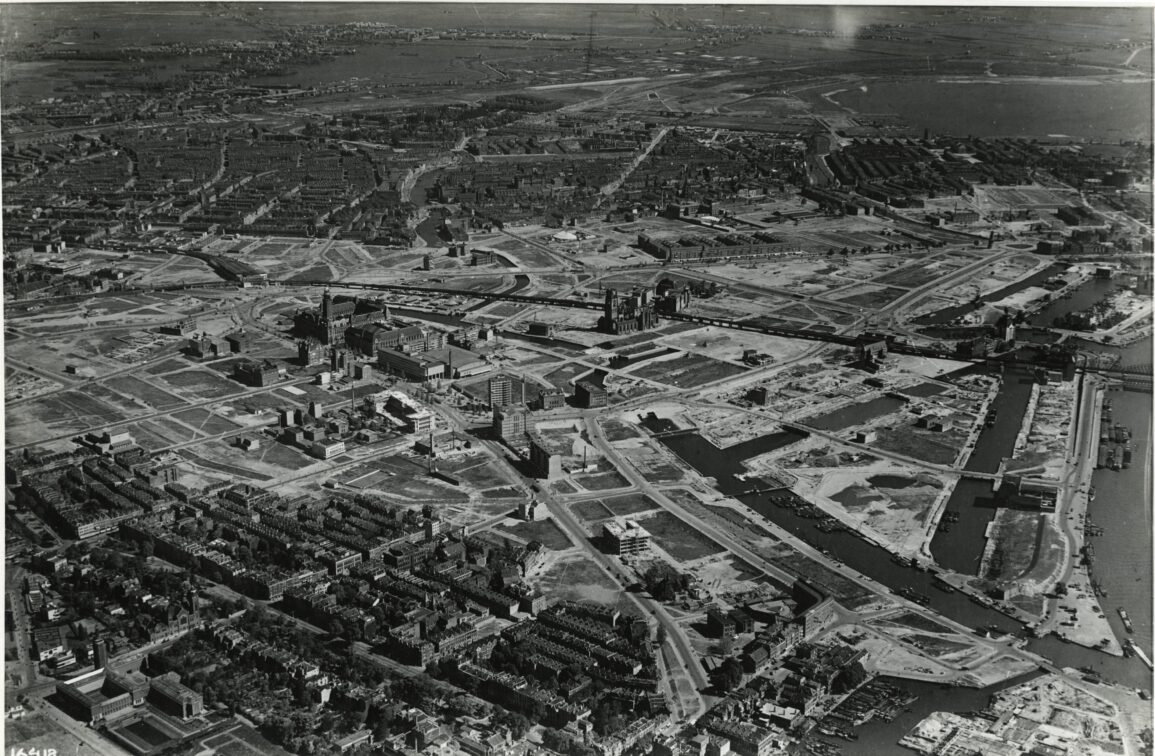
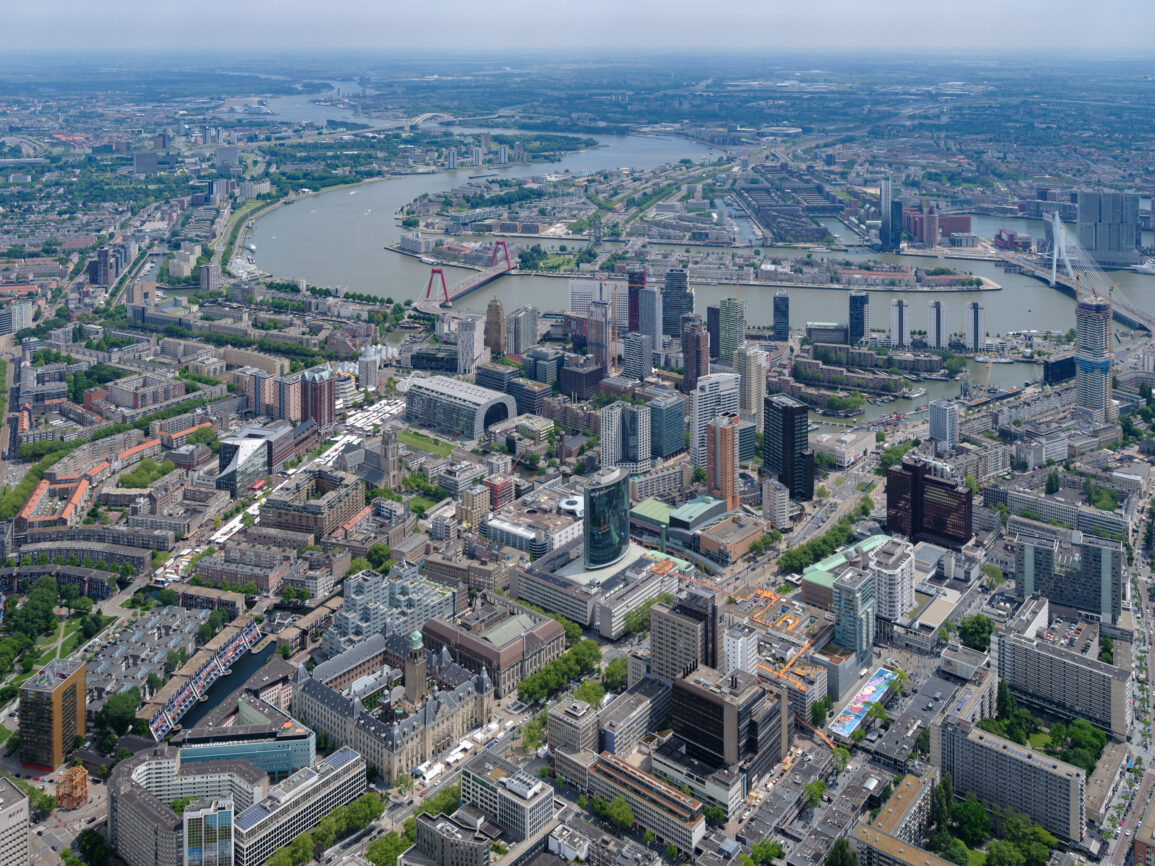
Rotterdam was always known as that international harbour city with high poverty rates and a culturally diverse population. The second city of the country, economically important but disadvantaged. Considered a cultural wasteland of sorts. This ‘calimero’-like status bred a sense of pride that kept inhabitants united in an ‘us against the rest’ kind of way. But while the more recent developments and economic windfalls have changed the city’s image, this did not benefit everyone equally, leading to even more feelings of inequality. Other growing cities have similar stories. Is this the inevitable fate of every Western European city with this profile? Or can Rotterdam harness compassion, innovation and its unique properties to turn a new and durable leaf?
Rotterdam is our hometown and our vantage point, informing the way we view the world. We know the cultural meaning of every building we stand on, every rooftop we inhabit. The city also inspires our view of the urban roofscape in a broad sense. The architecture of the reconstruction and the accompanying ‘Rotterdam layer’ has resulted in about 1 km2 of rooftop in the city centre, most of it at around the same height. In total, the municipality has an impressive 18.5 km2 of flat rooftop space at its disposal. The multitude of high rise buildings makes Rotterdam the most vertically oriented city in a very small, flat and horizontally focused country, always struggling with lack of space on the ground level.
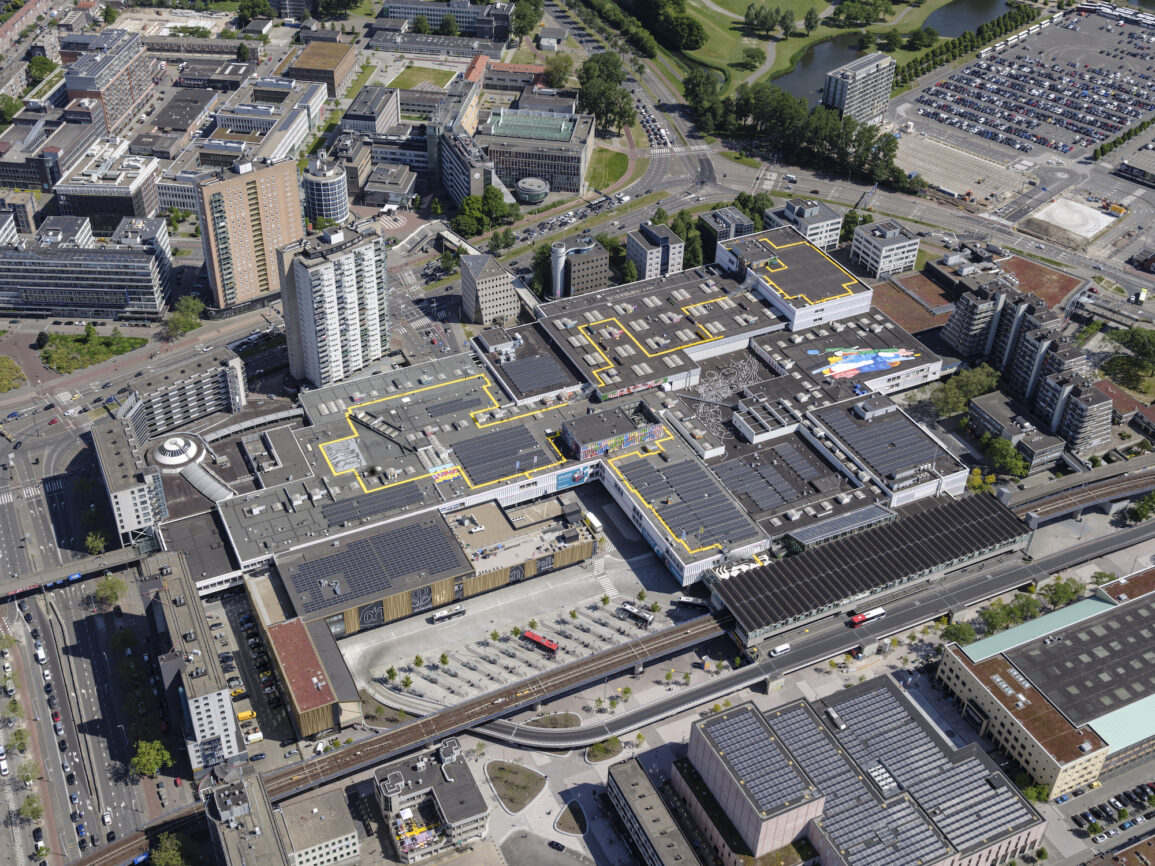
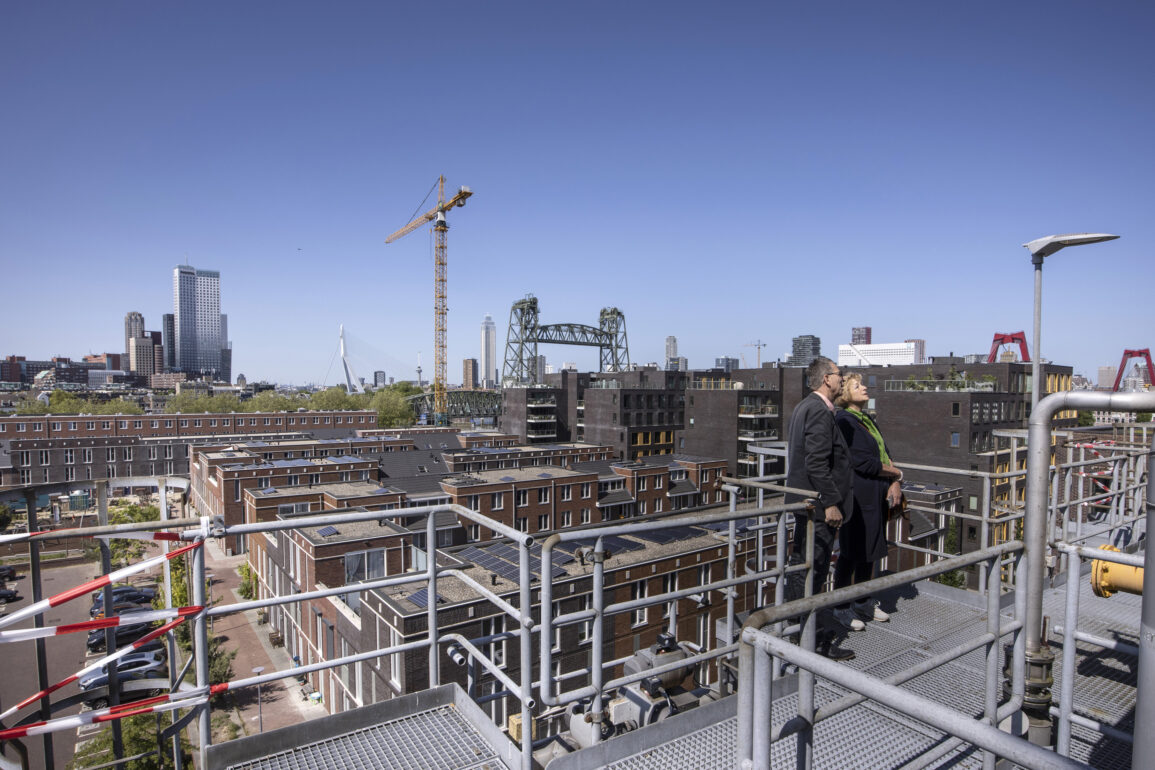
Rotterdam quite desperately needs new (breathing) space to find real solutions through interconnectivity. Because the way we have been shaping the city thus far is not sustainable. Rooftops can offer us this space.
All of this, combined with urban sprawl and cries for densification, sustainability and more high quality (semi)public space. If you’re looking for a worldwide rooftop revolution, Rotterdam is a great place to start.
Spending time on a rooftop has a special effect on people. From the roof you gain new perspective, you can find the horizon and your orientation. It’s a place where you can breathe freely, high above the incessant murmur of the city. At the same time, we don’t usually think about rooftops. The roof is simply there when we need protection from rain or sunshine. Even more so in a country like the Netherlands, which is very flat with a horizontal focus.
And while the potential of space on rooftops is in no way a new discovery (see the five rules for modern architecture by Le Corbusier), recent years have seen a spike in interest. Mainly from the field of architecture and design. But also policy makers looking for sustainable development (Rotterdam has had an integral rooftop policy for a few years now and Amsterdam has presented a version just recently) and property owners spurred on by the Paris accords. Especially in densifying cities, utilising rooftops is no longer a luxury but rather a necessity.
“5. Roof garden – flat roofs with garden terraces serve both harmonic and domestic utility, providing natural layers of insulation to the concrete roof and creating space.”
From the five rules of modern architecture by Le Corbusier
Rotterdam Rooftop Days is one of the first culturally oriented organisations aiming to uncover the roofscape’s potential. At the heart of the festival is not an artistic discipline or a specific (sub)culture but a physical place and what it could contribute to the lives of city dwellers, both culturally and in a broader sense. As a cultural organisation we choose other paths and amplify other voices than our fellow rooftop pioneers from other sectors like governments and commercial parties.
To us, rooftops are not a theme in a larger discourse of sustainability, not a business case and not a narrowing of the architectural field but a workspace for creative urban developments: new space to shape the city. We can use this space to fulfil our needs, and the choices we make should be informed by a vision of the urban future. Together with cultural agents and inhabitants, we’re constructing a rooftop philosophy to guide us in this endeavour.
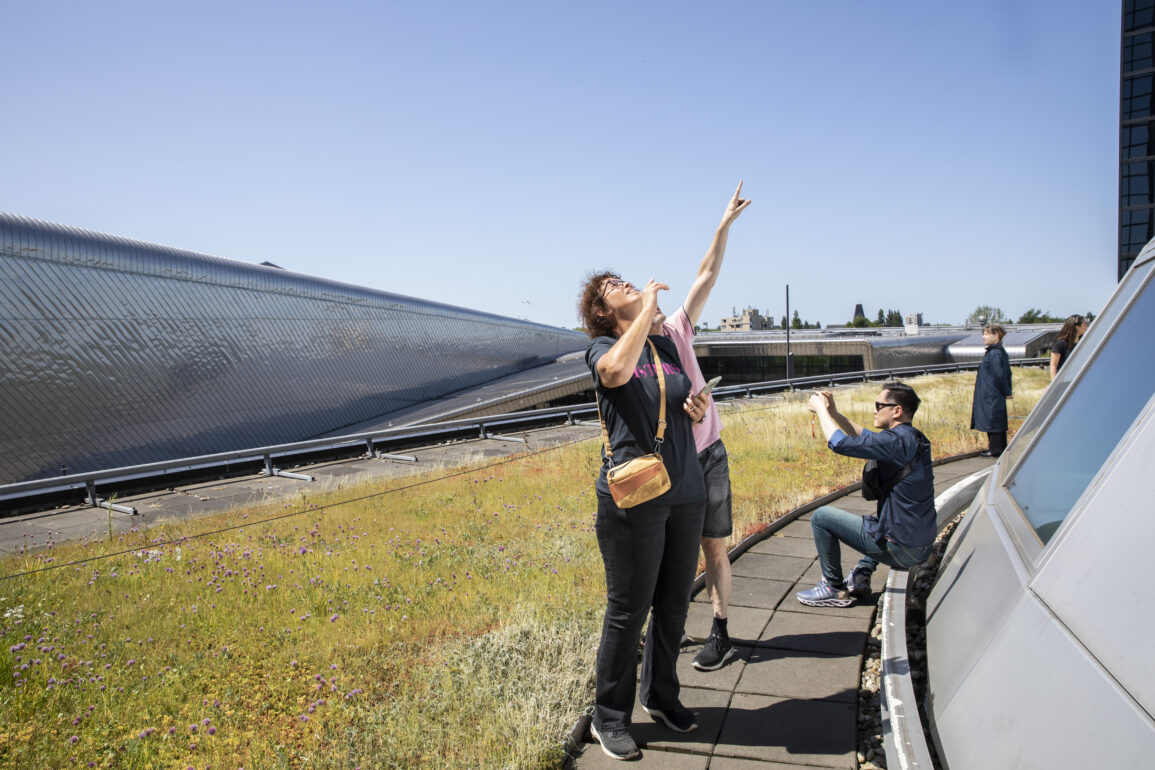
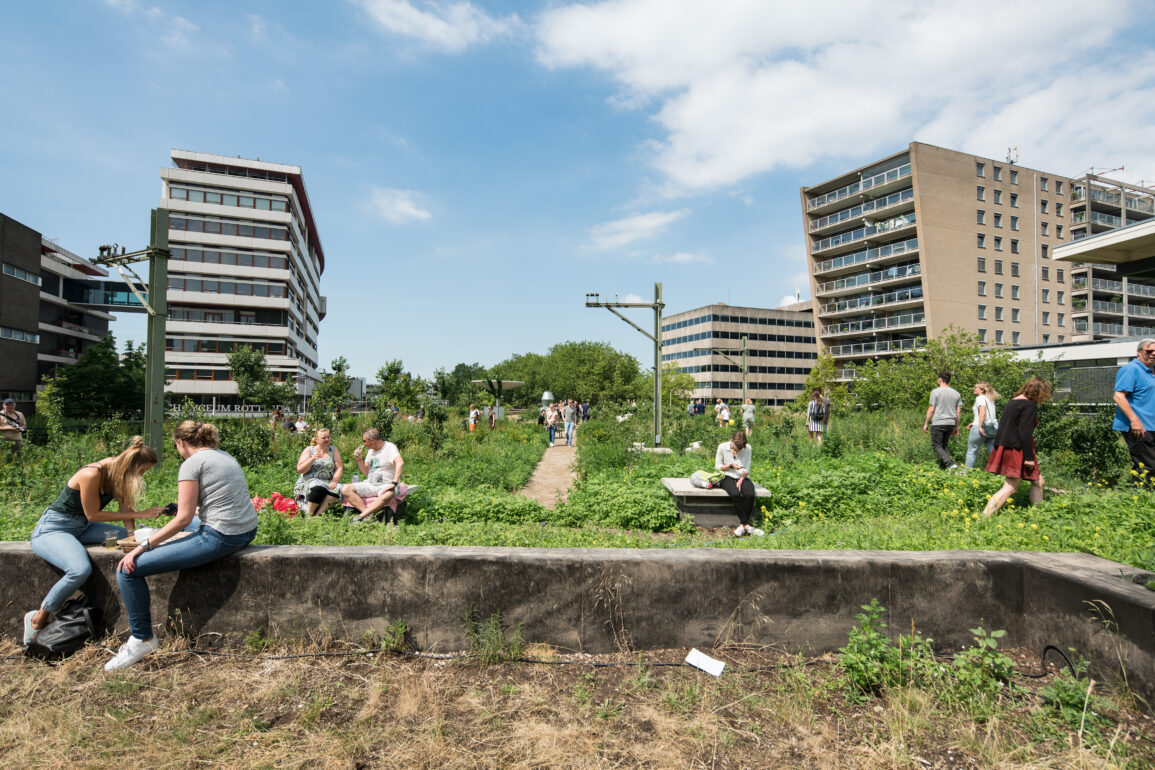
In that vision, the landscape of flat rooftops becomes both a reiteration and an expansion of the ground level. Room for new and more interpretations of the city’s needs. There is an opportunity to develop an inclusive second layer to the city. No need to demolish and rebuild or to push away the undesired but simply to occupy empty space that is waiting for us.
Space that is now locked away due to outdated systems and ways of thinking, until we learn to handle it differently.
We occupy this space and discover its possibilities. By simply doing, cultural agents take the lead and excite other sectors to do it with us and create circumstances for permanent change.
We practice what we preach. By organising a yearly festival, we are already a fixture in the city utilising rooftops. Our activities represent cultural, artistic and social value for visitors and artists. That being said, a festival is by definition short-lived, and therefore not the most obvious agent for permanent change.
Nonetheless, it’s very clear to us how the Rooftop Days are not just temporary, but that within our format we are conducive to a continuous movement. There is a reason that Rotterdam has been utilising large events for decades, to form, experience and strengthen the municipal culture and identity. For example: C70 (1970), European Capital of Culture (2001) and City of Architecture (2007).
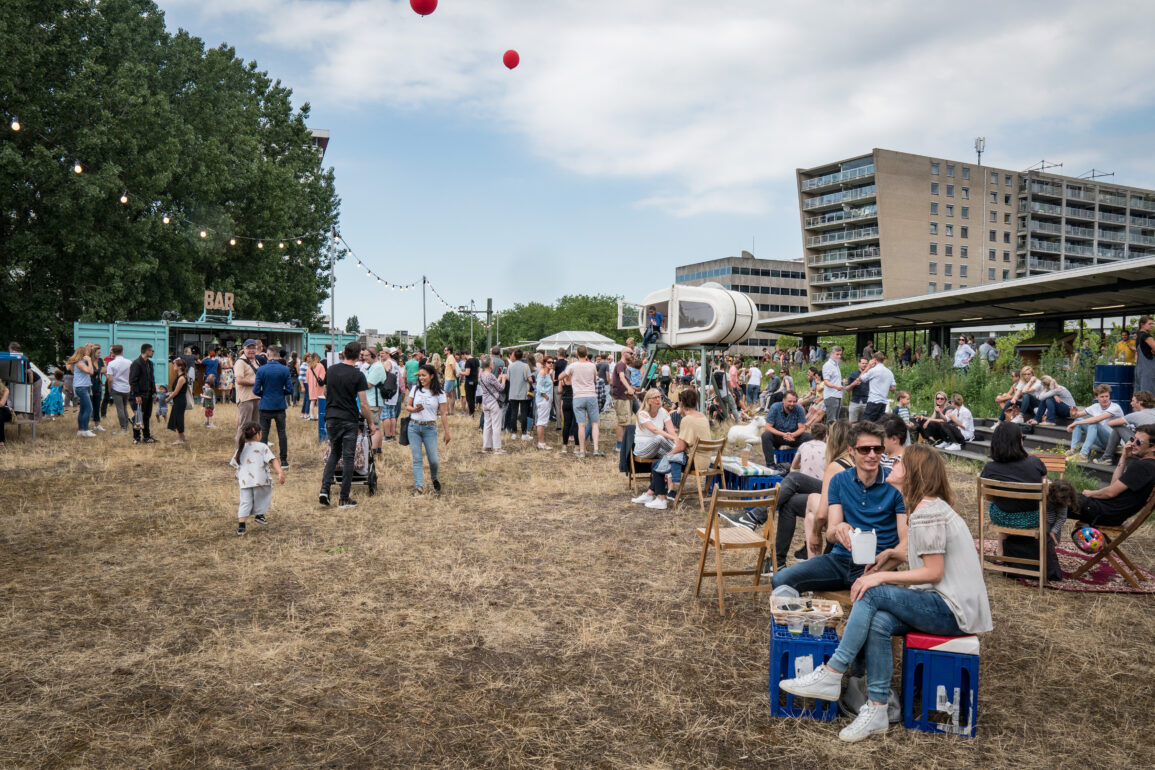
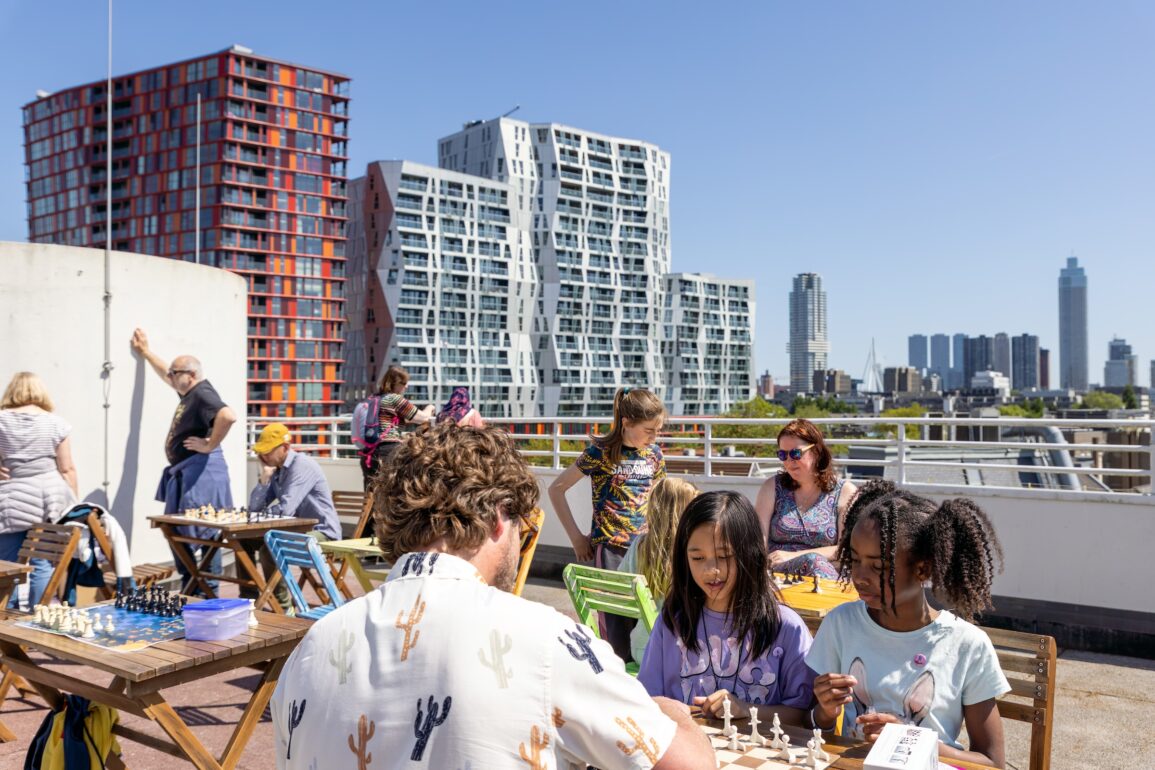
The innovative power of a festival is actually contained in its temporality, mainly because of the freedom this offers. A short duration creates room for experiment with stakeholders, which is doubly true regarding rooftops. Permission from owners, municipal permits and needed investments, on rooftops there are even larger differences in barriers between temporary and permanent use than on the ground level.
Audiences are also more open to experiment during a festival: the dynamic energy and relaxed vibe make architecture, art and sustainability more accessible.
This is how we are able to involve people who are usually not interested in urban development, except when it threatens their way of life.
Most visitors can experience our activities a few days a year, or a little longer during a large project like Rotterdam Rooftop Walk. But the impact of the whole is large: suddenly the mostly empty roofscape of Rotterdam is turned into a festive and hospitable space for tens of thousands. The transformation is apparently effortless, thanks to an ever more professional team with acquired knowledge and goodwill.
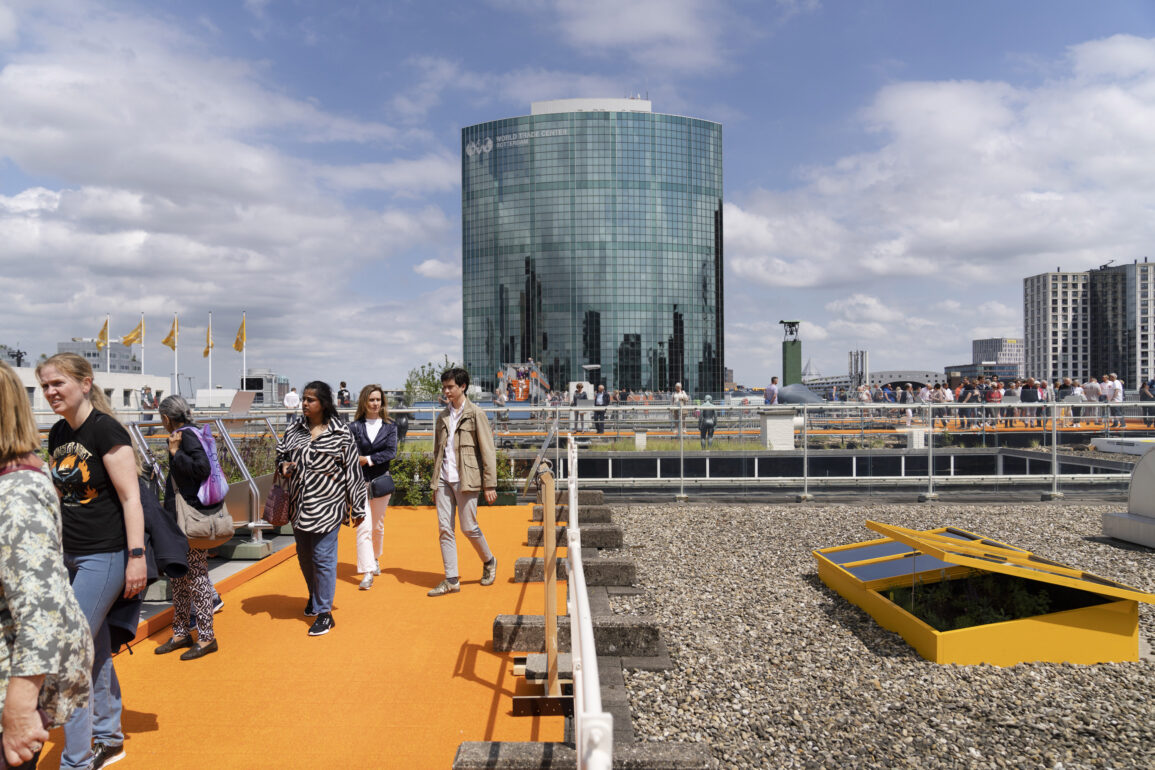
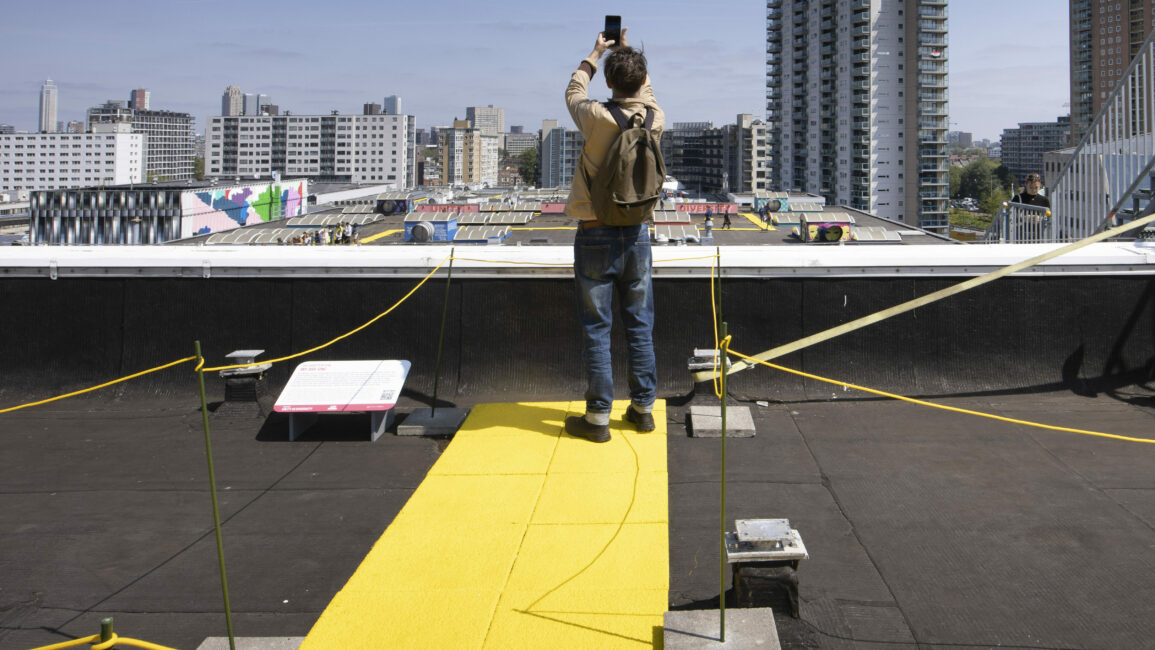
Much of that temporary nature is also smoke and mirrors on behalf of the aforementioned audience and stakeholders. We need to operate year round to be able to do what we do. We work together with international partners, with the real estate and construction sector, with universities and trade schools and with makers and thinkers from the cultural sector. But the clear deadline of the festival assures we have momentum and focus. Projects make leaps, we have everyone’s full attention and in a short time we achieve more than other teams might do in a year.
We experience the dynamic environment of our festival as a working prototype for a vibrant roofscape. And this makes it infinitely easier to acknowledge the unexpected benefits and to estimate what we need to do to create this value permanently for cities. Every iteration of the festival brings this more into focus and shapes the cyclical nature of our work year, leaving time for reflection and evaluation. Every festival is a new chapter in the rooftop story. And in that story, the annual appointment with tens of thousands of visitors is our time to show, not tell.
